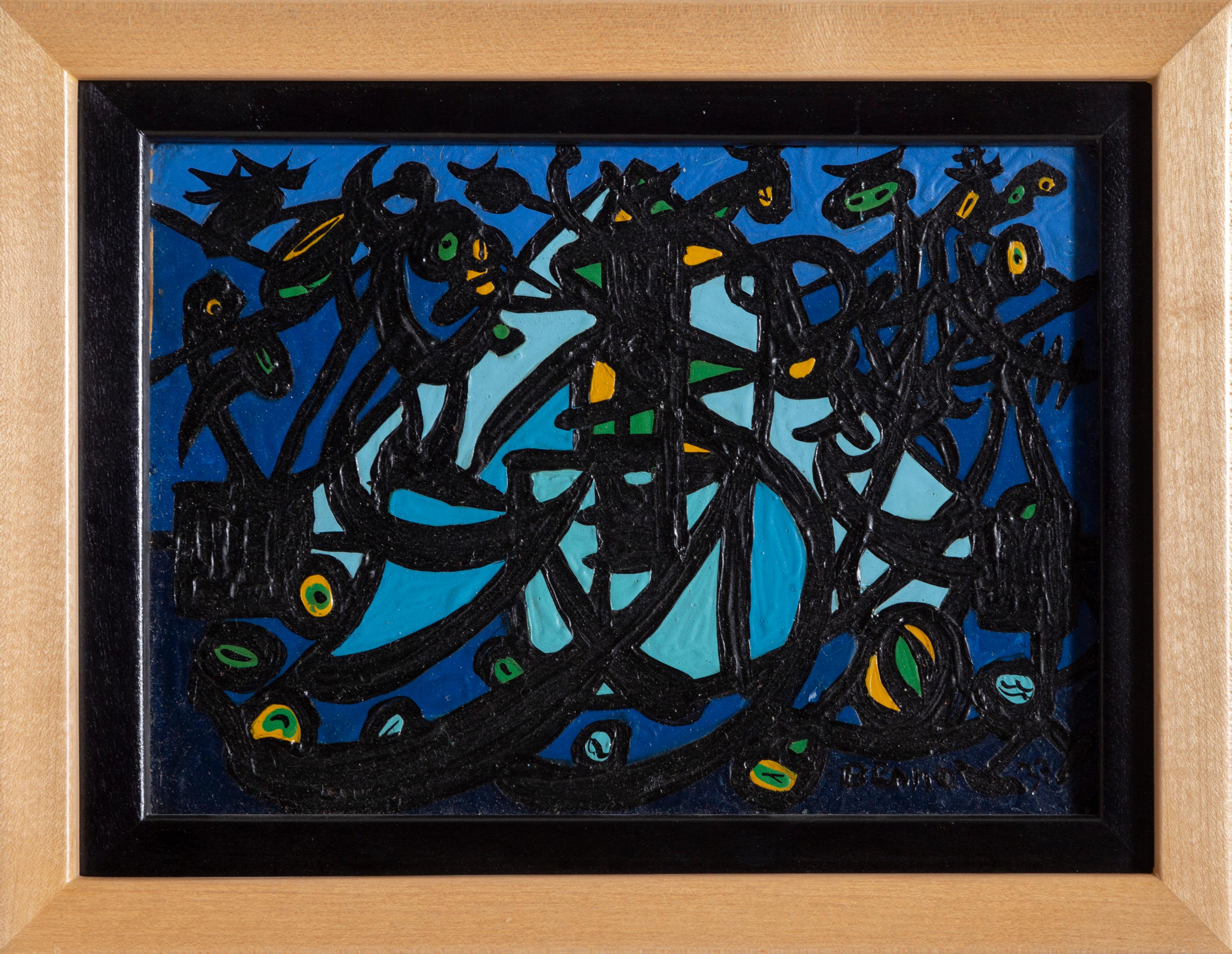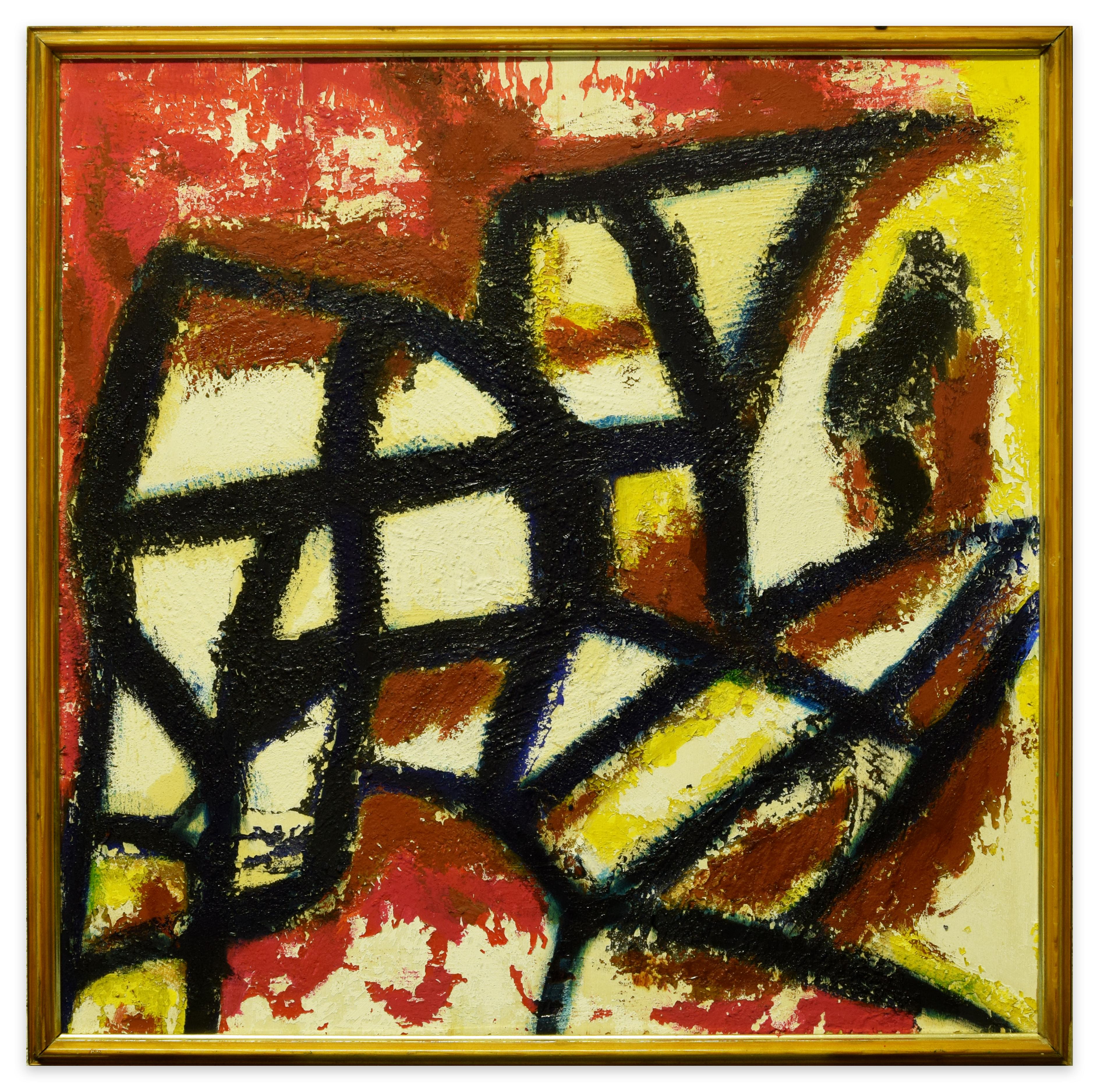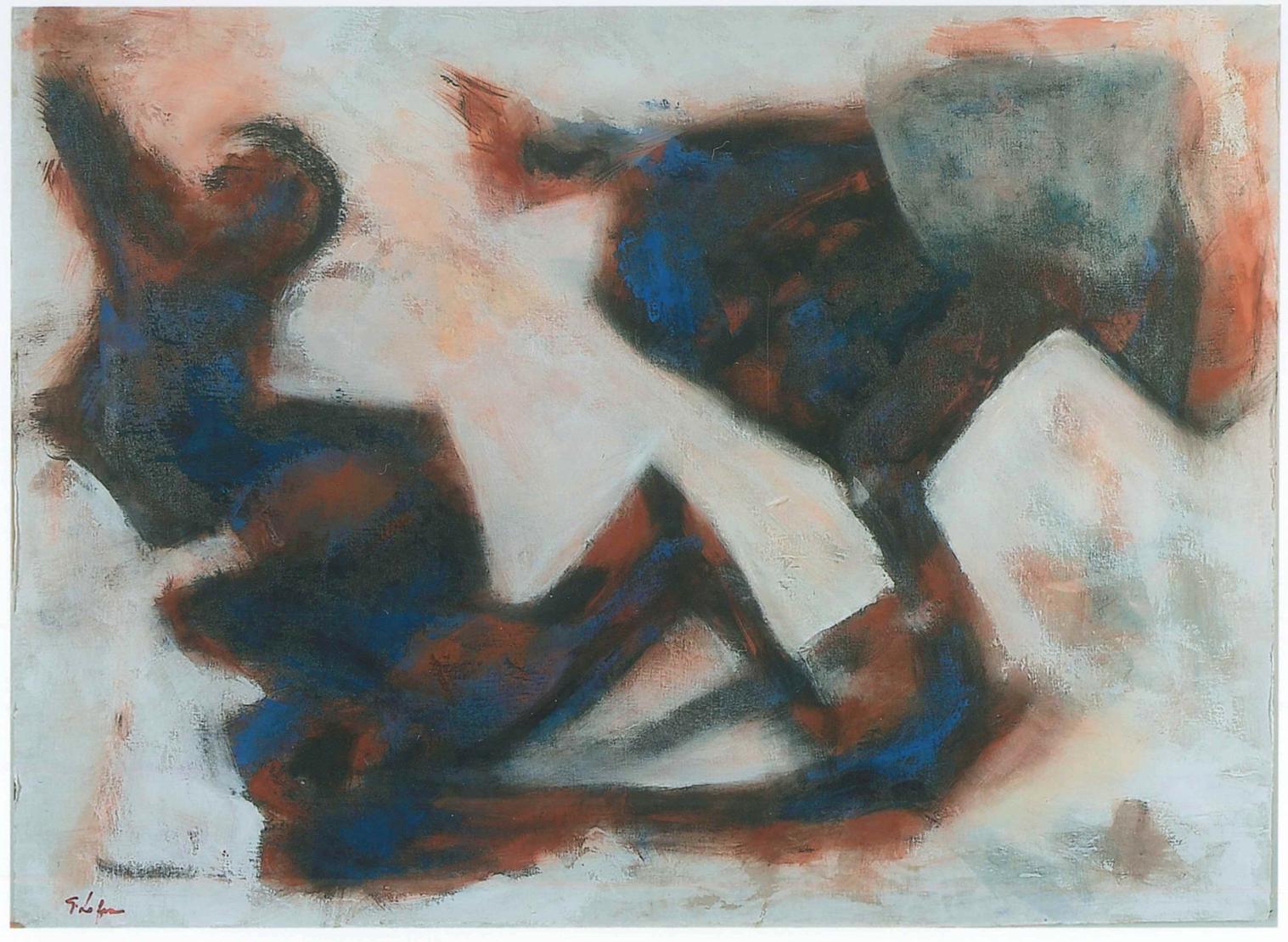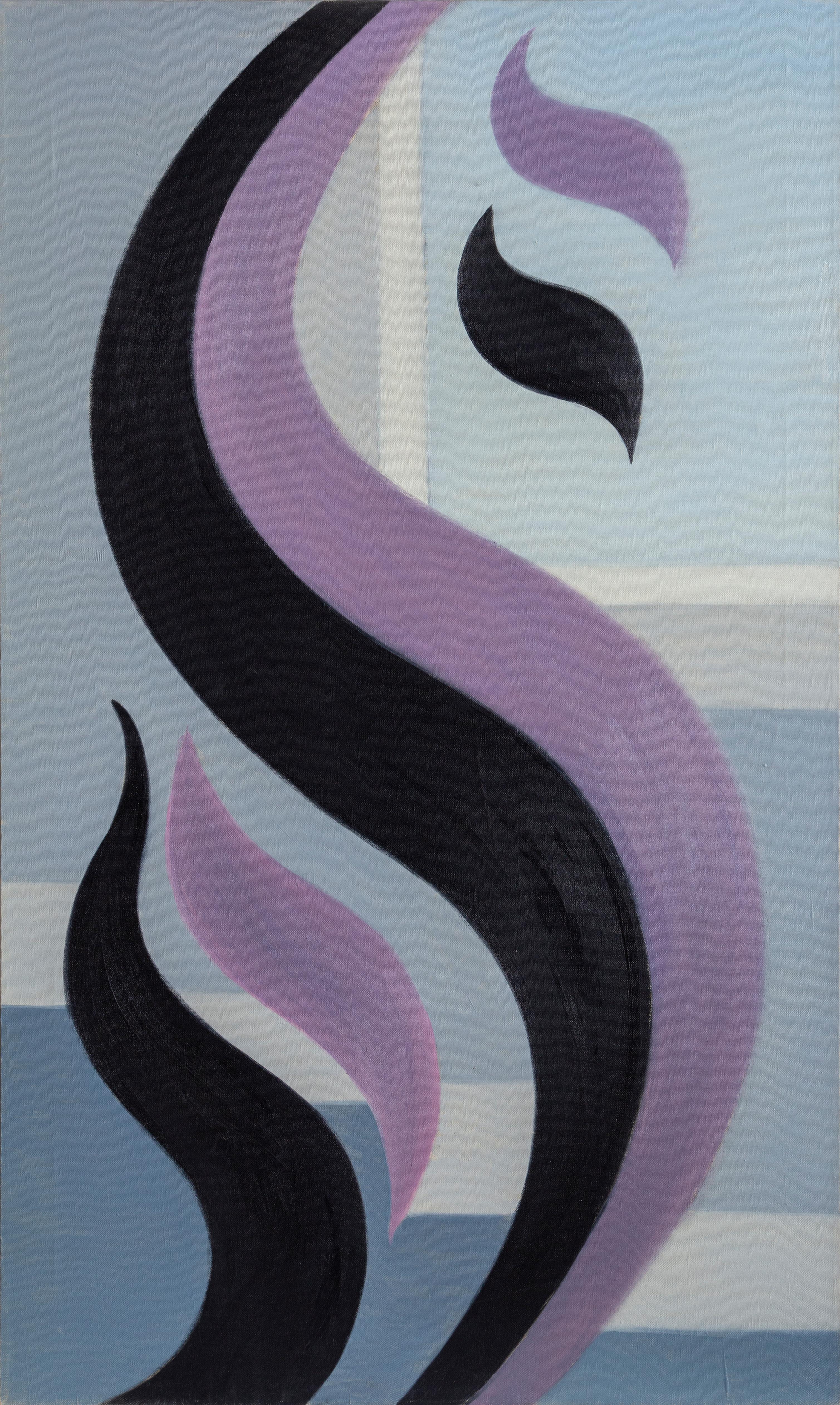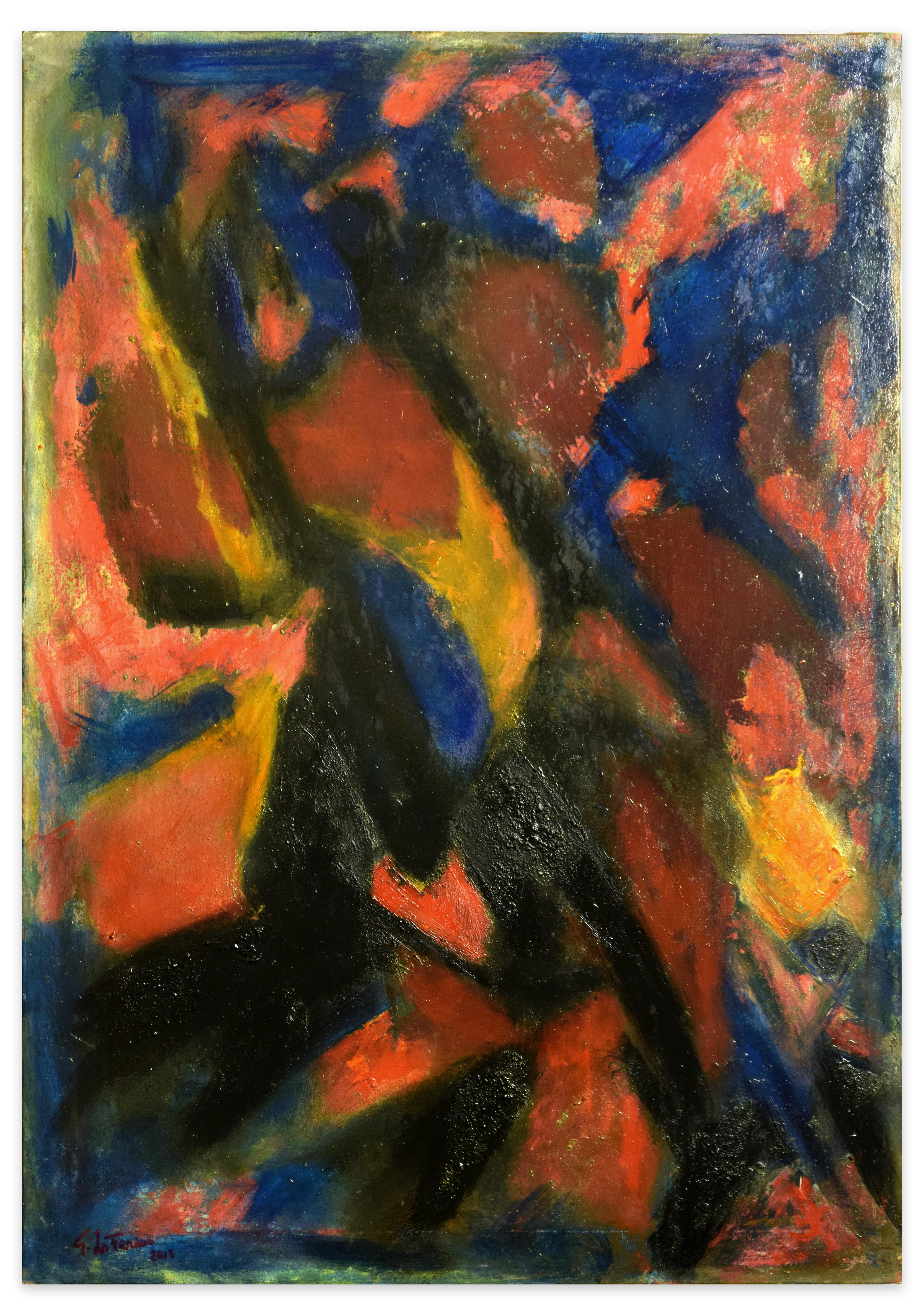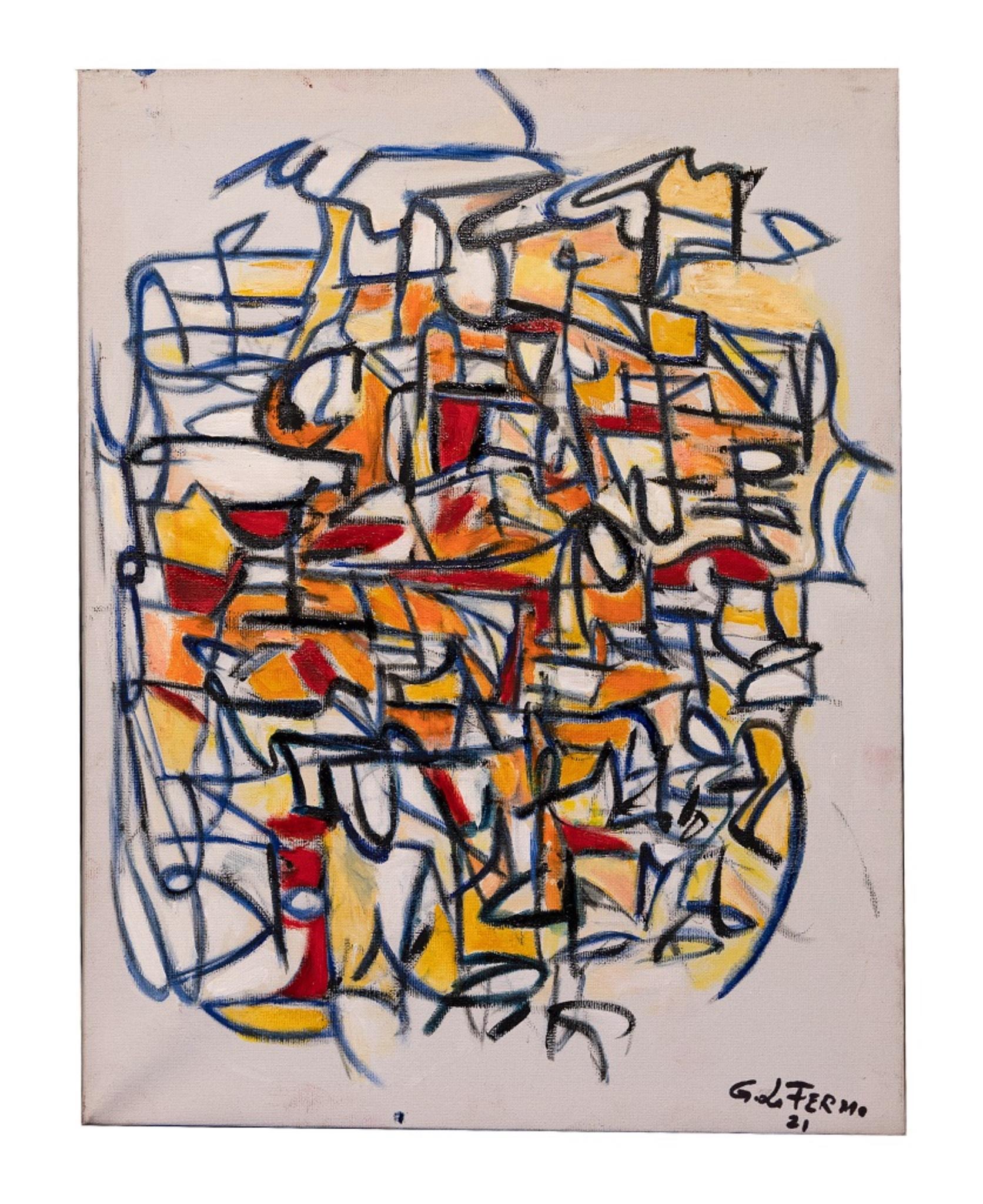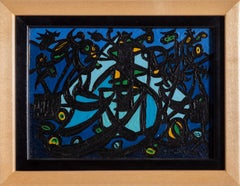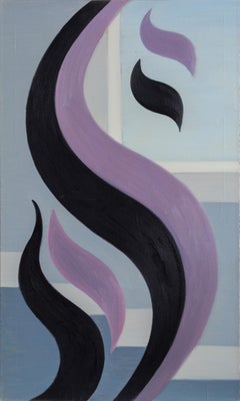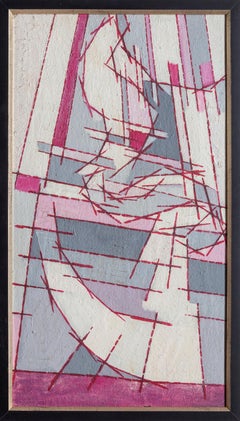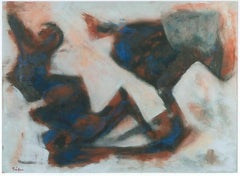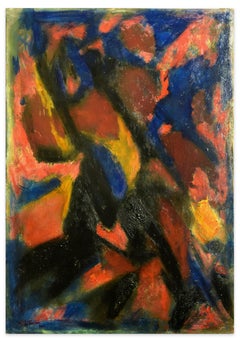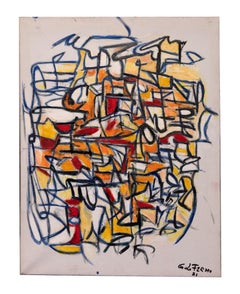Items Similar to Fetiche 6, Abstract Expressionist Painting by Benjamin Benno
Want more images or videos?
Request additional images or videos from the seller
1 of 6
Benjamin G. BennoFetiche 6, Abstract Expressionist Painting by Benjamin Benno1937
1937
Price Upon Request
Price Upon Request
Price Upon Request
Price Upon Request
Price Upon Request
Price Upon Request
Price Upon Request
Price Upon Request
Price Upon Request
Price Upon Request
About the Item
Set against a deep green background of layered paint and wavy lines, Benjamin Benno’s textured composition features an array of unidentifiable figures of varying sizes and shapes. This dimensional abstract work exemplifies the artist’s avant-garde style of Modernism that he explored while working in Paris before World War II.
Fetiche 6
Benjamin Benno, American (1901–1980)
Date: 1937
Oil on board, signed and dated
Size: 7.5 x 9.5 in. (19.05 x 24.13 cm)
Frame Size: 9.75 x 11.75 inches
- Creator:Benjamin G. Benno (1901-1980, American)
- Creation Year:1937
- Dimensions:Height: 9.75 in (24.77 cm)Width: 11.75 in (29.85 cm)
- Medium:
- Movement & Style:
- Period:
- Condition:
- Gallery Location:Long Island City, NY
- Reference Number:1stDibs: LU46611670832
About the Seller
4.9
Platinum Seller
Premium sellers with a 4.7+ rating and 24-hour response times
Established in 1979
1stDibs seller since 2014
3,155 sales on 1stDibs
Typical response time: 1 hour
- ShippingRetrieving quote...Shipping from: Long Island City, NY
- Return Policy
Authenticity Guarantee
In the unlikely event there’s an issue with an item’s authenticity, contact us within 1 year for a full refund. DetailsMoney-Back Guarantee
If your item is not as described, is damaged in transit, or does not arrive, contact us within 7 days for a full refund. Details24-Hour Cancellation
You have a 24-hour grace period in which to reconsider your purchase, with no questions asked.Vetted Professional Sellers
Our world-class sellers must adhere to strict standards for service and quality, maintaining the integrity of our listings.Price-Match Guarantee
If you find that a seller listed the same item for a lower price elsewhere, we’ll match it.Trusted Global Delivery
Our best-in-class carrier network provides specialized shipping options worldwide, including custom delivery.More From This Seller
View AllLandscape, Cubist Oil on Board Painting by Benjamin Benno
By Benjamin G. Benno
Located in Long Island City, NY
Landscape
Benjamin Benno, American (1901–1980)
Date: 1937
Oil on board
Size: 6.25 x 8.75 in. (15.88 x 22.23 cm)
Frame Size: 8.75 x 11 inches
Category
1930s Cubist Abstract Paintings
Materials
Oil, Board
Abstract Modern Painting by Benjamin Benno
By Benjamin G. Benno
Located in Long Island City, NY
An original oil painting on canvas by Benjamin Benno, American (1901 - 1980) measuring 40 x 24 inches, unsigned. Provenance: O'Hara Gallery, NYC. By the early 1930's Benno had estab...
Category
Mid-20th Century Modern Abstract Paintings
Materials
Canvas, Oil
Price Upon Request
Abstract Composition II, Abstract Expressionist Painting by Jenik Cook
By Jenik Cook
Located in Long Island City, NY
Artist: Jenik Cook, American (1940 - )
Title: Abstract Composition II
Year: 2011
Medium: Oil on Canvas, signed and dated l.l. and verso
Size: 24 x 36 in. (60.96 x 91.44 cm)
Category
1980s Abstract Expressionist Abstract Paintings
Materials
Canvas, Acrylic
Height and Depth, Modern Abstract Painting by Benjamin Benno 1951
By Benjamin G. Benno
Located in Long Island City, NY
An original oil painting on board by Benjamin Benno, American (1901 - 1980) measuring 25 x 13.5 inches. Nicely framed to 39.5 x 27 inches. By the early 1930s Benno had established ...
Category
1950s Modern Abstract Paintings
Materials
Oil, Panel
Jeu de Taches, Abstract Expressionist Oil Painting on Board by Julien Dinou
By Julien Dinou
Located in Long Island City, NY
Artist: Julien Dinou, Swiss (1895 - 1983)
Title: Jeu de Taches
Year: 1966
Medium: Oil on Board, Signed and dated
Size: 20 x 26 inches; 50.8 x 66.04 cm
Frame: 24...
Category
1960s Abstract Expressionist Abstract Paintings
Materials
Oil, Board
Large Abstract Expressionist painting by Oskar D'Amico
By Oskar D'Amico
Located in Long Island City, NY
Artist: Oskar Maria D'Amico, Italian (1923 - 2003)
Title: Untitled
Year: 1967
Medium: Oil on Canvas, signed
Size: 66 x 48 in. (167.64 x 121.92 cm)
Category
1960s Abstract Expressionist Abstract Paintings
Materials
Oil
You May Also Like
Abstract Expression - Oil Painting 2018 by Giorgio Lo Fermo
By Giorgio Lo Fermo
Located in Roma, IT
Abstract Expressionism is an original artwork realized by Giorgio Lo Fermo in 2018.
Original colored oil on hardboard.
Hand-signed and dated on the back.
Abstract Expression is a ...
Category
2010s Abstract Abstract Paintings
Materials
Oil
Abstract Expressionism - Oil Painting 2014 by Giorgio Lo Fermo
By Giorgio Lo Fermo
Located in Roma, IT
Abstract Expressionism is an original artwork realized by Giorgio Lo Fermo in 2014.
Oil on canvas applied on hardboard.
This contemporary artwork was realized by the artist in 2014...
Category
2010s Abstract Abstract Paintings
Materials
Oil
Informal Painting - Oil Painting 2013 by Giorgio Lo Fermo
By Giorgio Lo Fermo
Located in Roma, IT
Pittura Informale is an original oil painting on canvas, realized in 2013 by the Italian artist Giorgio Lo Fermo.
Hand-signed and dated on the lower left margin, signed on the back ...
Category
2010s Abstract Expressionist Abstract Paintings
Materials
Oil
Abstract Expression - Oil paint by Giorgio Lo Fermo - 2021
By Giorgio Lo Fermo
Located in Roma, IT
Abstract Expressionism is an original contemporary artwork realized by the Italian artist Giorgio Lo Fermo in 2021.
Original Oil painting on canvas.
Hand-signed and dated on the b...
Category
2010s Abstract Expressionist Abstract Paintings
Materials
Oil, Canvas
Untitled oil on canvas painting Abstract Expressionism
By Deyan Valkov
Located in Sitges, Barcelona
Title: Untitled
Artist: Deyan Valkov
Medium: Oil on canvas
Dimensions: 24 x 20 inches
Year: 2002 (signed on the artwork)
Frame: Unframed
Style: Abstract Expressionism
Description of...
Category
Early 2000s Abstract Expressionist Abstract Paintings
Materials
Canvas, Oil
$1,054 Sale Price
55% Off
Abstract Expression - Oil On Canvas by Giorgio Lo Fermo - 2022
By Giorgio Lo Fermo
Located in Roma, IT
Abstract Expression is an original artwork realized by Giorgio Lo Fermo (b. 1947) in 2022
Original Oil Painting on Canvas.
Hand signed and dated on the lower left margin.
Hand sig...
Category
21st Century and Contemporary Abstract Abstract Paintings
Materials
Canvas, Oil
More Ways To Browse
1901 Oil
Argentina Artists
El Paso
Large Green Painting
Interactive Art
Acrylic Layered Paintings
Red And Orange Painting
San Miguel De Allende
Contour Art
Tufts University
Blue Abstract Flowers
40 X 40 Painting
Contemporary Dot Painting
Notre Dame Cathedral
Expressionist Floral Paintings
Dior 1984
Palm Desert Art
Seal Painting
